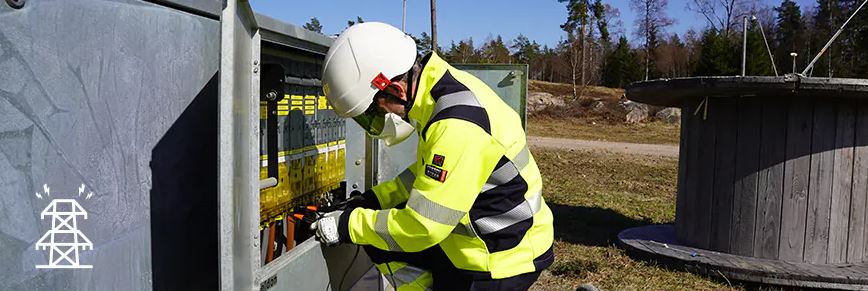
QUANTIFYING ELECTRIC ARC FLASH RISK FOR THE RIGHT PROTECTION
One of the most common questions we receive from our customers is about the difficulty of quantifying the risk of an electric arc flash. That is, how strong the arc flash will be if it occurs and how likely it is to happen. In this article, I present two different methods for quantifying arc flash risks and provide guidance on when each method should be used.
Two quantification methods: Calculate or estimate
To solve the issue of quantifying the potential thermal arc energy, several standards and methods have been developed. NFPA 70E is the American standard for Electrical Safety in the Workplace. This comprehensive standard covers many aspects of electrical work, including the use of the IEEE 584:2018 method to calculate thermal arc energy. The method is popularly referred to as an open arc test even though it can be applied in enclosed spaces. In addition, NFPA 70E also includes the method, NFPA 70E 130.7, to estimate the potential arc energy.
DGUV-I 203-077 is the German standard that corresponds to NFPA 70E in Europe and provides support for conducting risk assessments and calculating thermal arc energy. The standard, often referred to as the box test, also includes the BGI/GUV-I 5188 method for calculating this energy.
Below I provide a brief description of each type of method and how they can help you in quantifying arc flash risks. The methods differ because one type is based on calculating the risk while the other provides guidance on assessing and estimating the risk.
Calculate - Incident Energy Analysis within IEEE 1584: 2018 or BGI/GUV-I 5188
The IEEE 1584: 2018 and BGI/GUV-I 5188 methods provide guidelines for calculating the potential thermal arc energy released when an arc is activated. Both methods consider several important parameters, including voltage, short-circuit current, switching time, equipment configuration, working distance and whether the arc occurs in an open or closed area.
By entering the values of these parameters into the equations described in IEEE 1584:2018 and BGI/GUV-I 5188, you can quantify the thermal arc energy and calculate the distance from the arc where the energy equals or exceeds a specified value. This will give you a value of the thermal arc energy that can occur at your expected working distance. This will allow you to find out the distance from the arc where there is a risk of burn injury, also known as the arc flash boundary.
Estimate - Arc Flash PPE Category method within NFPA 70E
NFPA 70E provides you with helpful tools to estimate the potential thermal arc flash energy in an electrical installation. This type of assessment involves comparing your facility against others and making a recommendation on which PPE category of arc flash protection to choose.
It is essential to estimate the incident energy levels that occur in an arc flash, assess the arc flash range and evaluate the probability and severity of potential damage.
Leading companies including the ESTI in Switzerland, have developed matrices to help estimate the thermal arc energy in a facility and match your protective equipment against it with a specified safety margin.
Which method is most effective?
The calculation method is more accurate and therefore the most effective method. One of the major advantages of calculating your arc flash risk is that it makes choosing the correct level of protection easier. This results in a more comfortable and cost-effective system of protective clothing.
The assessment method is mainly used when the arc flash risk has not been quantified. For example, when an electrician comes to a site where the risk has not been calculated, he or she can perform a risk assessment according to NFPA 70E and adjust the protection accordingly.
One disadvantage of this method is that it is less accurate than the calculation method. This uncertainty may lead to the user wearing unnecessarily thick and heavy clothing as a precaution.
By following the procedures outlined in NFPA 70E and DGUV-I 203-077, you can calculate and estimate to manage the risk of an arc flash, promoting a safer working environment.



